Brown (Penaues aztecus) and white (Penaeus setiferus) shrimp make up approximately 25% of total commercial landings by weight in North Carolina. But with shrimp black gill disease creeping up the Southeast Atlantic coast, is it possible that number could change in the near future? While the answer to this question still hangs in the balance, some ECU researchers are doing all they can to learn more about the disease and its prevalence in NC estuaries.
Black Gill disease is caused by a parasite native to the Gulf of Mexico. Since the 1990s occurrences of the disease have slowly spread north, and in 2016, the North Carolina Dept. of Marine Fisheries (NCDMF) first noted the disease in state waters during its annual trawling surveys. The disease is named for its presentation in later stages when infected shrimp appear to have black gills; however, the disease can go undetected to the naked eye for quite some time. In addition to the melanization of the gills, the disease can cause inflammation, cysts and nodules, and necrosis of gill tissue. These symptoms can lead to poor respiratory function and reduced physical endurance in shrimp, as well as an increased risk of predation upon the diseased shrimp.
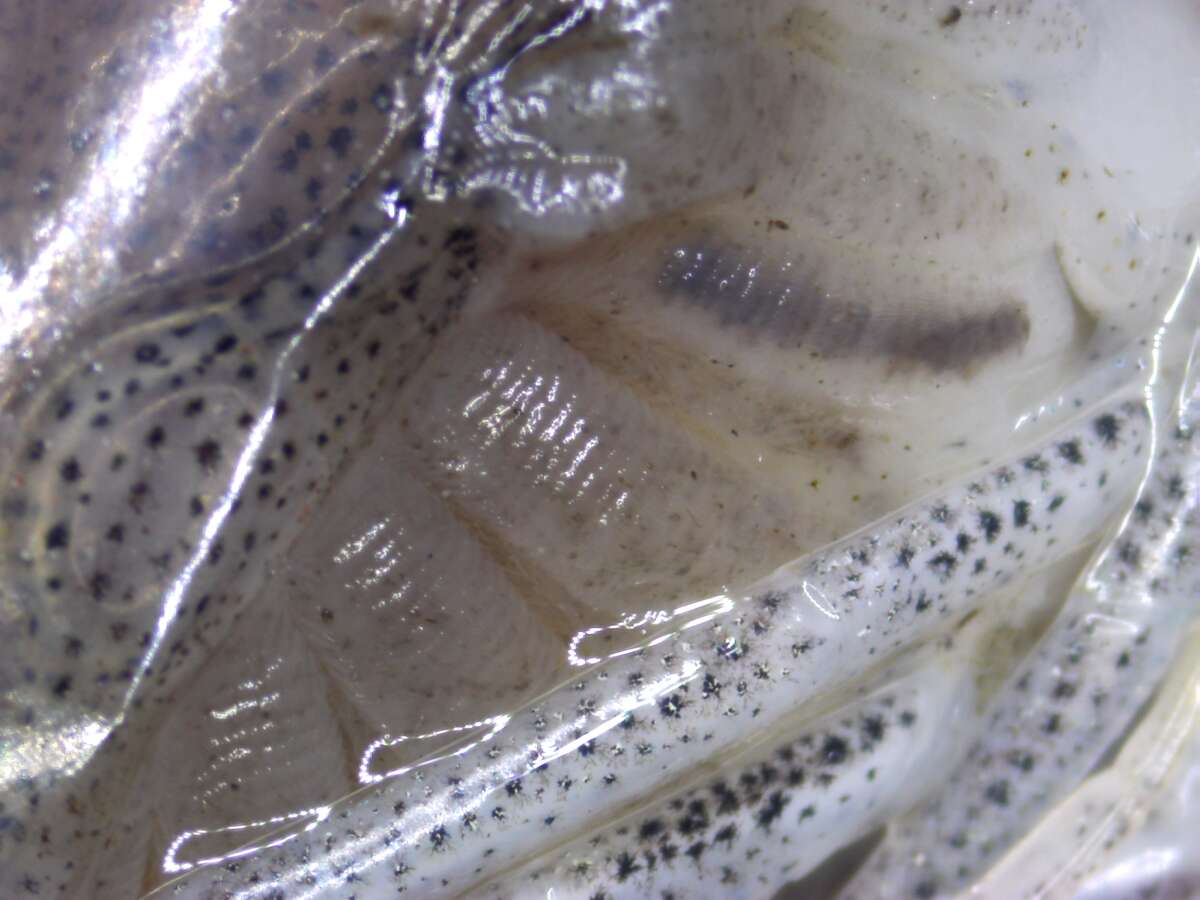
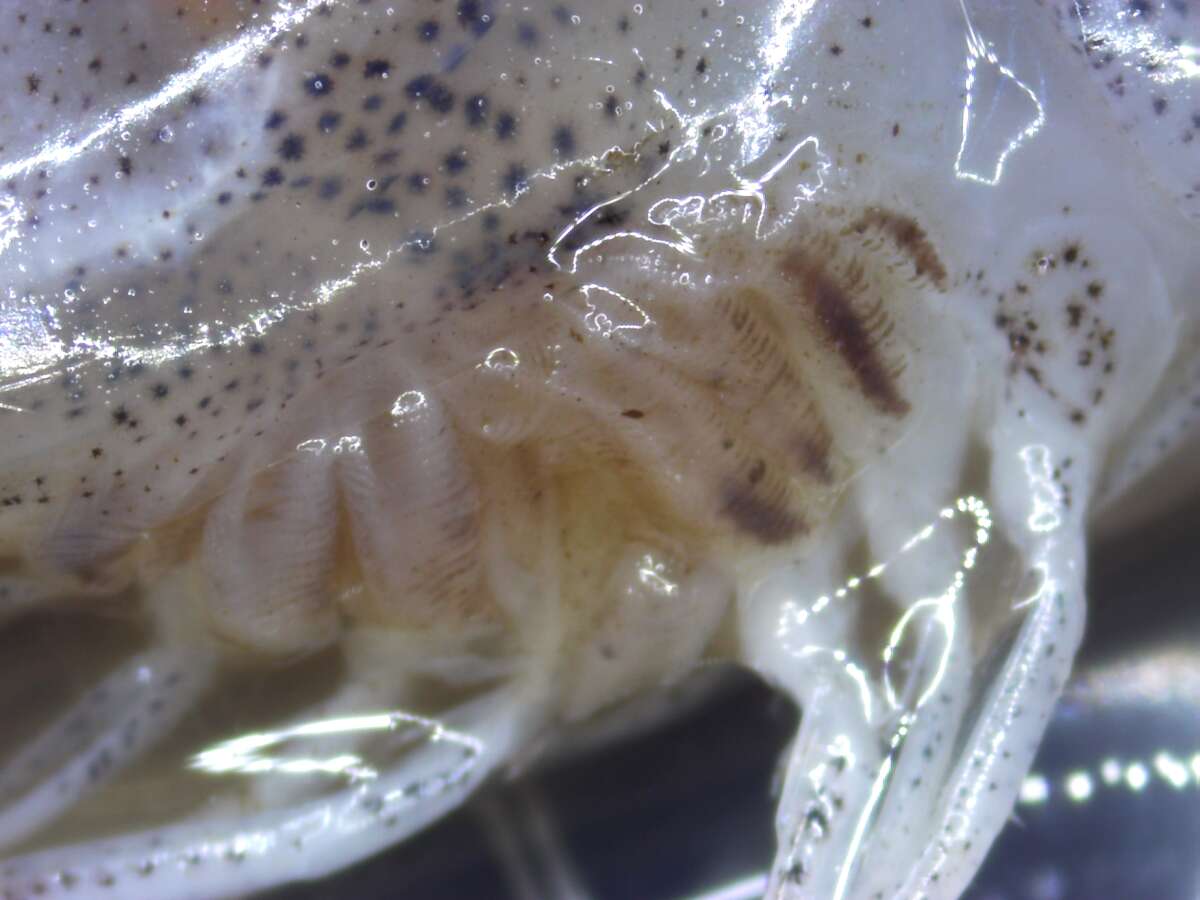
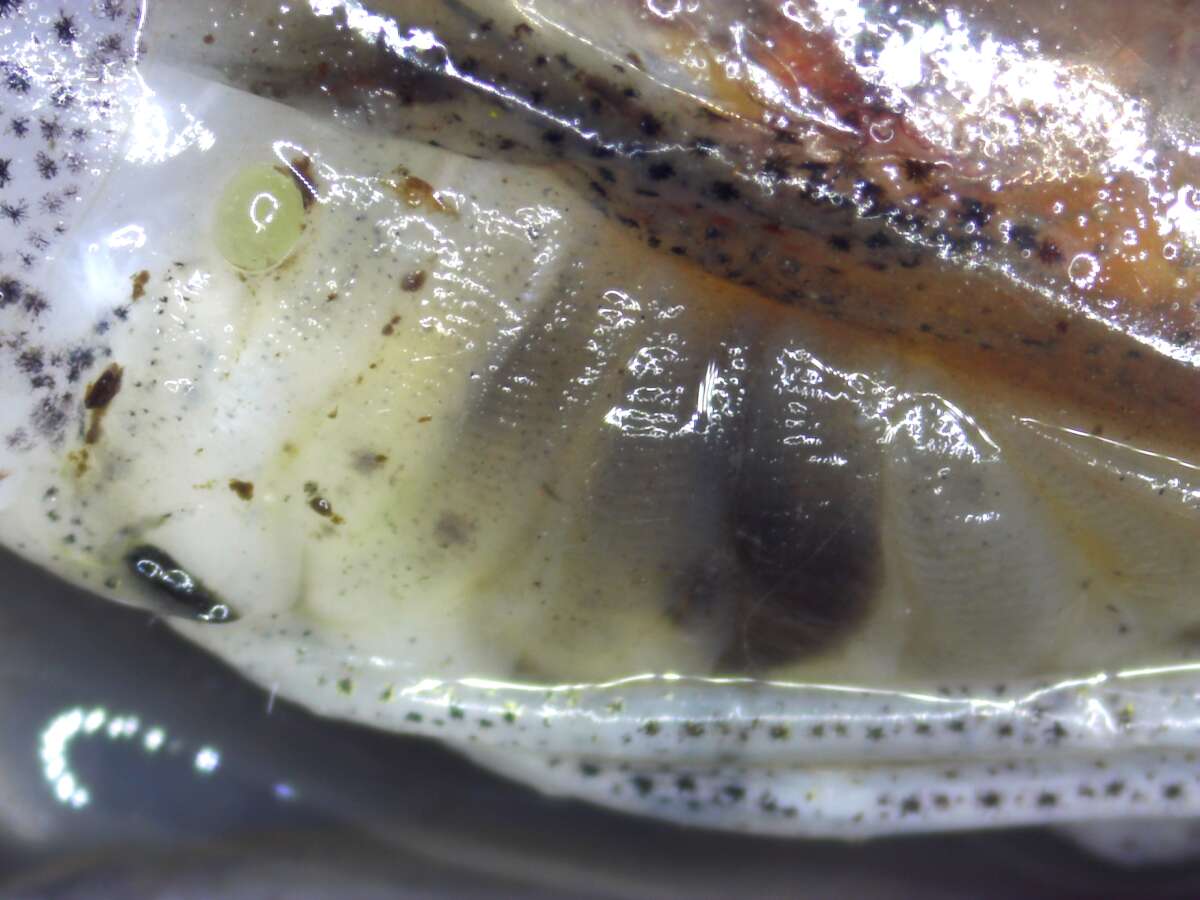
The three photos above show a progression of Black Gill Disease in shrimp from Stages 1 (left or top), 2 (middle), and 3 (right or bottom). It is not common to find shrimp exhibiting Stage 4 of the disease since, at that point, the infected individuals likely do not survive much longer.
With such impacts known to harm brown and white shrimp species, it is no surprise that the commercial fishing community is concerned about the presence of the disease and the implications it could have for the industry. Thus, a study led by ECU biologists Drs. April Blakeslee and Jim Morley aims to better understand the prevalence and spread of the disease in NC estuaries by evaluating a variety of sites and environmental conditions.
As they put it in their grant proposal, the study will “allow us to gain the first real understanding of the distribution, prevalence, and intensity of the disease in NC waters, as well as the abiotic drivers influencing disease dynamics and host response.”
The study, which will last through 2024, uses a combination of visual examinations, microscopy and PCR sequencing- a type of genetic testing- to help identify diseased shrimp collected across seven different sites in the Pamlico Sound and estuarine waters further south. Sample sites in the region include Englehard Bay, Stumpy Point Bay, Oregon Inlet, White Oak River, Newport River, and New River. Their physical and statistical analyses of the samples should reveal if there are certain hotspots for the disease or if disease prevalence is relatively the same across the different sites. Based on environmental data collected at each site, such as water temperature and salinity, the researchers will have information that can be used for predictive models to assess how rising temperatures and changing salinities could affect the prevalence of disease, as well as potential impacts on the shrimp fishery.
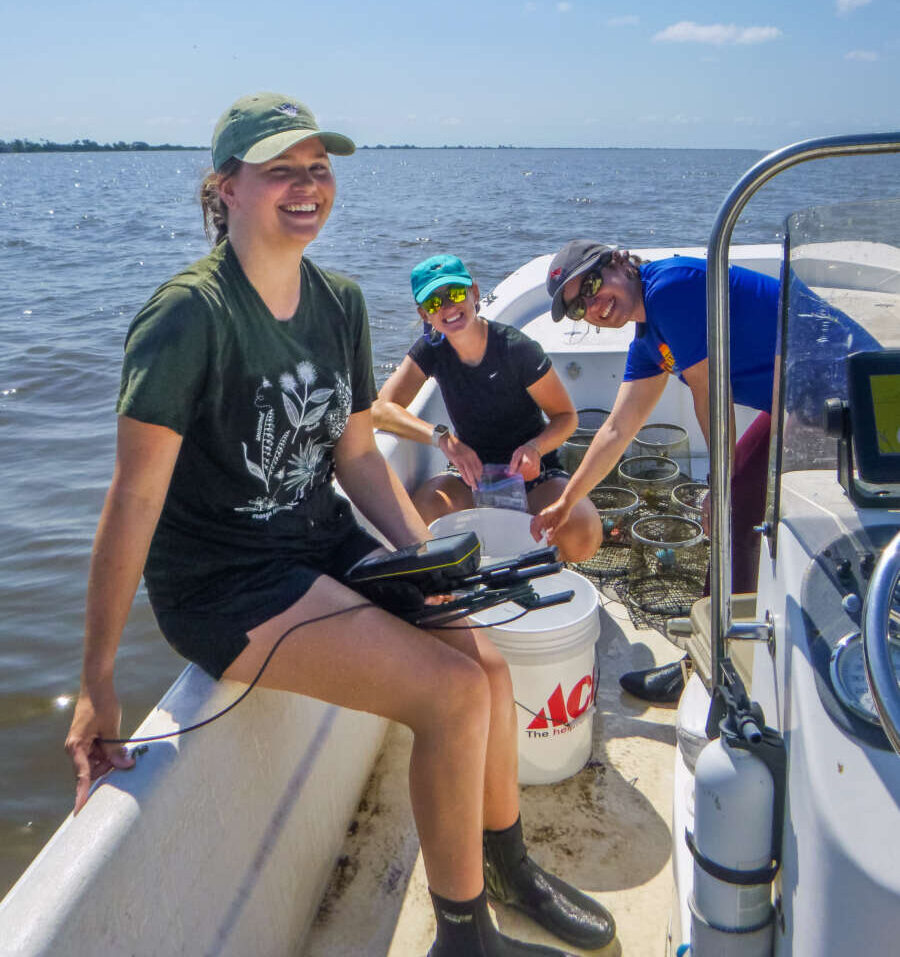
Lab technician Chloe Gabriel (left) and REU participant Summer Duba (middle) assist Dr. Blakeslee (right) with water quality measurements and shrimp collection in the estuary.
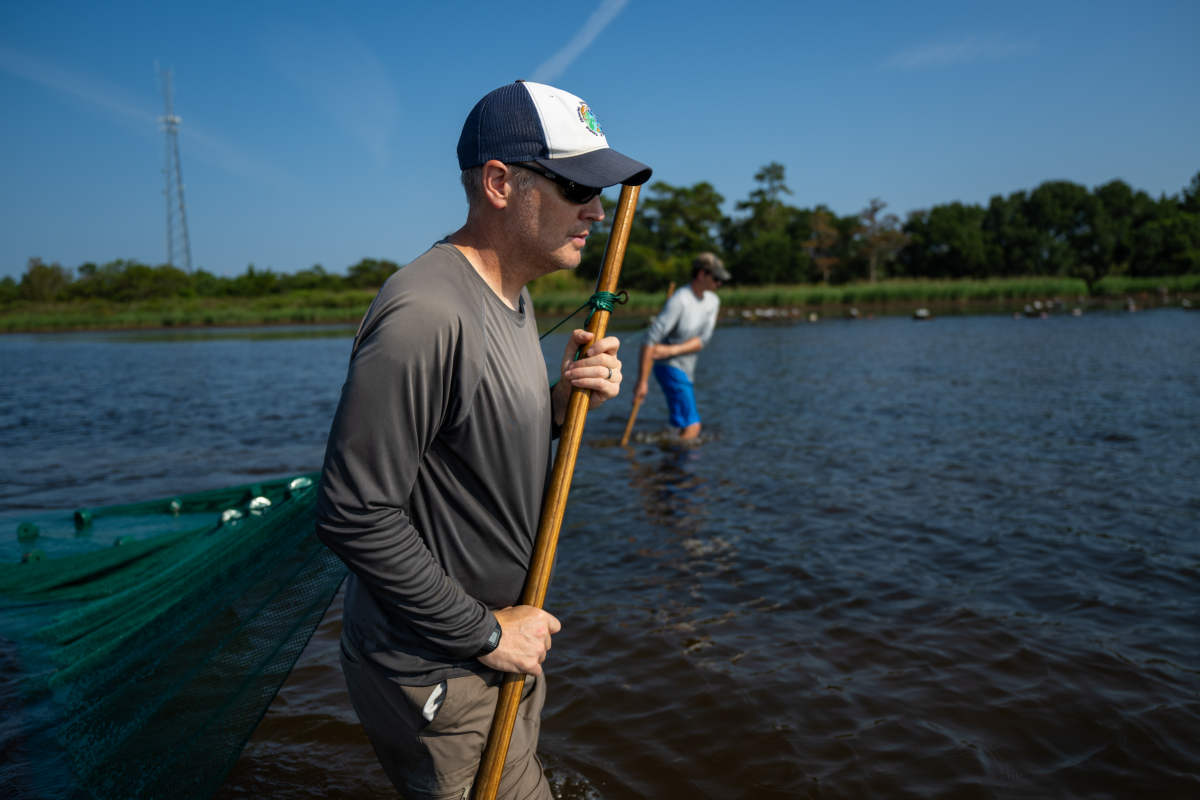
Dr. Jim Morley (foreground) and Ph.D. student Andrew McMains (background) shuffle through shallow water pulling a seine net to collect shrimp.
While the study is ongoing, preliminary results suggest that:
- Infection rates are highest in white shrimp during the late summer and early fall.
- The prevalence of black gill disease varies across different locations in the Albemarle-Pamlico Estuarine System. The reason for these differences is currently uncertain, but they could be related to water quality, habitat types, or even the number of shrimp present in a particular area.
- Infection rates are higher in larger/ older shrimp that are making their way from nursery habitats in the estuary to coastal inlets. This is an important insight because proper gill function is likely important during this life stage. These shrimp are moving long distances, encountering predators, and potentially have to navigate patches of low oxygen as they move from one area to the next.
- Infected shrimp exhibit greater signs of stress in lower salinity environments, which in turn could make them more likely to succumb to the disease.
Given these findings and those still to come, “[The study is] especially relevant for future management of the fishery and contributes to a greater understanding of disease dynamics in the region. Our project will generate valuable data for fishery managers and fishers,” report Blakeslee and Morley.
The preceding story first appeared in the Fall 2024 edition of CoastLines.

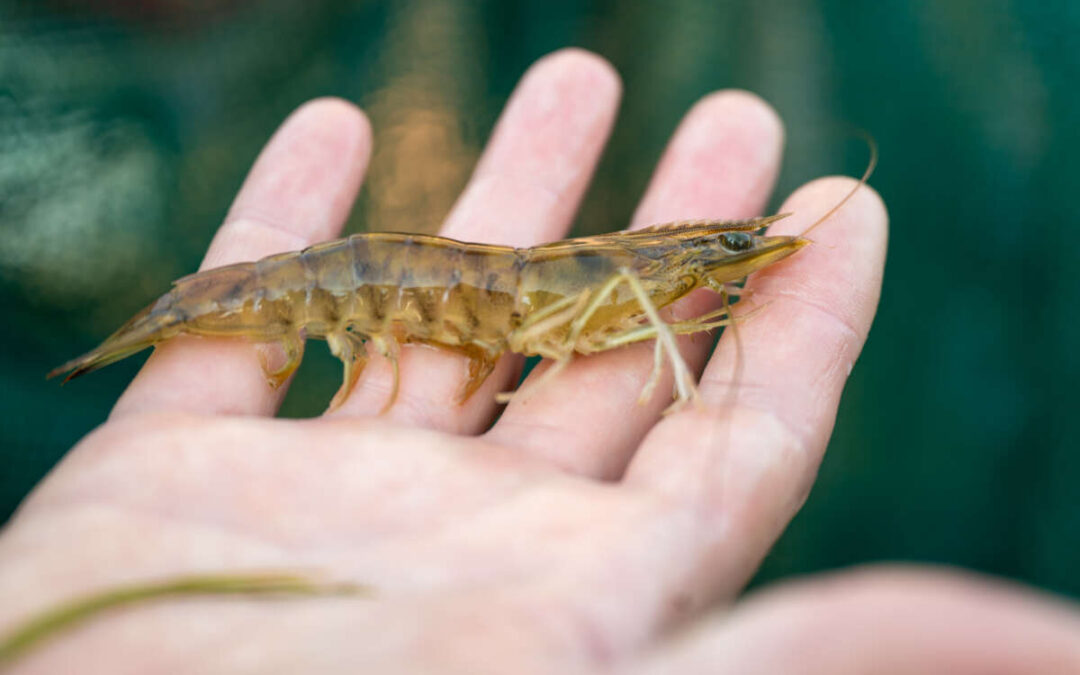

 Based at the Coastal Studies Institute (CSI), the North Carolina Renewable Ocean Energy Program (NCROEP) advances inter-disciplinary marine energy solutions across UNC System partner colleges of engineering at NC State University, UNC Charlotte, and NC A&T University. Click on the links below for more information.
Based at the Coastal Studies Institute (CSI), the North Carolina Renewable Ocean Energy Program (NCROEP) advances inter-disciplinary marine energy solutions across UNC System partner colleges of engineering at NC State University, UNC Charlotte, and NC A&T University. Click on the links below for more information. ECU's Integrated Coastal Programs (ECU ICP) is a leader in coastal and marine research, education, and engagement. ECU ICP includes the Coastal Studies Institute, ECU's Department of Coastal Studies, and ECU Diving and Water Safety.
ECU's Integrated Coastal Programs (ECU ICP) is a leader in coastal and marine research, education, and engagement. ECU ICP includes the Coastal Studies Institute, ECU's Department of Coastal Studies, and ECU Diving and Water Safety. The ECU Outer Banks campus is home to the Coastal Studies Institute.
The ECU Outer Banks campus is home to the Coastal Studies Institute.

